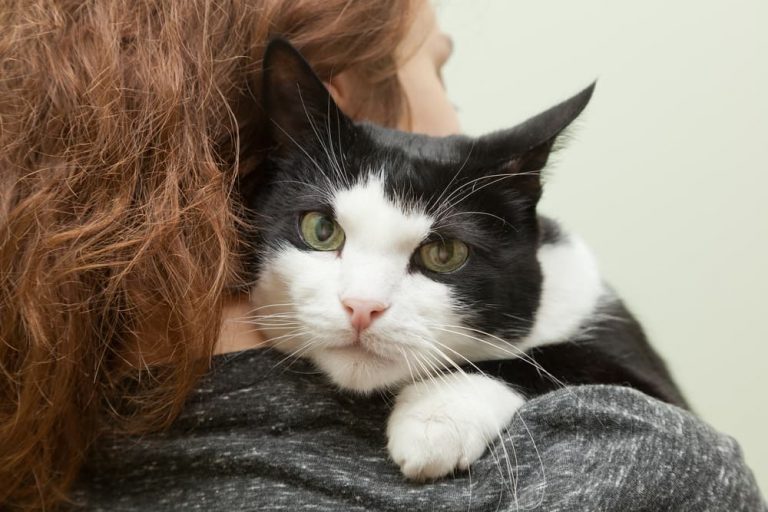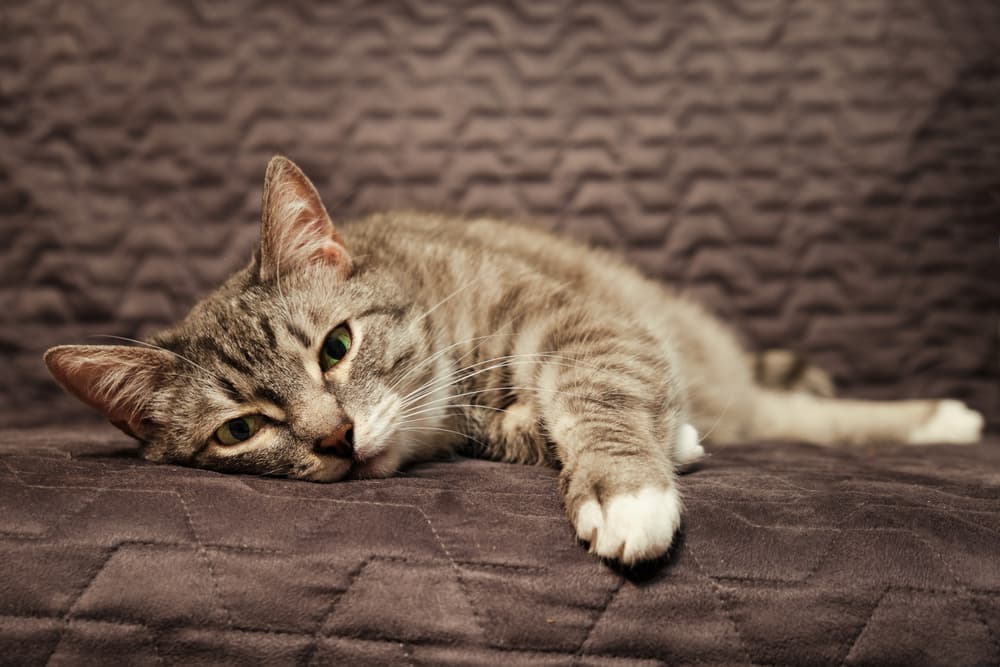Kidney Stones in Cats: Causes, Symptoms, and Treatment

Overview
Kidney disease is a common concern for cat parents—1 in 3 cats will develop kidney disease in their lifetime. Kidney stones can go along with this common disease, and since the 1980s, kidney stones in cats have become 10 times more prevalent.
If you want to know what to watch for and possible treatment if your veterinarian finds cat kidney stones, read below.
What Are Kidney Stones?

Kidneys are important filters for your cat’s bloodstream, removing toxins by putting them into urine. Vitamins, blood sugar (glucose), hormones, and many other important components are re-circulated into the body after filtering. The kidneys flow urine into the bladder through tubes called ureters. Once urine fills the bladder, it flows out of the body through a single tube called the urethra.
When a cat has more minerals or salts in the body than usual, like calcium, they build up and form into small stones in the kidneys. This is a very similar process to humans. The most common type of kidney stone in humans and cats is calcium oxalate, and kidney stones are frequently associated with high blood levels of calcium (hypercalcemia). Magnesium ammonium phosphate stones, also known as struvite stones, are the next most frequent stone in cats and are associated with ongoing bacterial infections.
How Often Do Cats Get Kidney Stones?
Kidney stones occur in cats but aren’t that common. Knowing exactly how often they occur is difficult, since many cats that have kidney stones don’t experience symptoms and the stones may never be found.
Siamese cats are more prone to kidney stones than other breeds. It’s believed long-haired cats may be more prone to them as well.
Cat Bladder Stones Vs. Kidney Stones

Bladder stones and kidney stones are made of the same minerals and occur for the same reasons. However, these two types of stones do not necessarily occur together. Only 15 percent of cats with stones in the kidneys have bladder stones. Bladder stones are much more common, composing over 90 percent of all stones found in the urinary system.
The symptoms of bladder stones and kidney stones are usually similar, although symptoms can vary. Common symptoms include increased urination, increased drinking, blood in the urine, and changes in behavior like being less active or urinating outside of the litter box. For kidney stones, most cats don’t have symptoms. If symptoms are present, kidney stones often cause pain in the lower back which can cause a cat to arch their back and tuck their belly.
Symptoms of Kidney Stones in Cats

Kidney stones do not often cause symptoms in cats. When symptoms occur, it is usually because a kidney stone is trying to pass out of the kidney down the ureter—which in humans is described as excruciatingly painful.
Your cat may experience symptoms because they have kidney disease, and just happens to have stones as well. Kidney stones can cause:
- Increased urination and drinking
- Vomiting
- Decreased appetite
- Weight loss
- Abdominal pain – your cat may not want to be picked up, or they may keep their back arched and tuck their belly up
- Blood in the urine
- Behavior changes – like hiding more, less playful, urinating outside the litter box, etc.
Diagnosing Kidney Stones in Cats

Most of the time, kidney stones are diagnosed when cats aren’t even experiencing symptoms. X-ray is the most common way, but ultrasound can also detect kidney stones.
Physical examination is important to look for symptoms of kidney stones, or other medical conditions that could explain symptoms. Baseline blood work is necessary to check for kidney disease—some studies have shown a correlation between kidney disease and having kidney stones.
Also, checking your cat’s calcium levels is important to prevent calcium oxalate stones. A urinalysis and urine culture are best practice since some kidney stones occur due to chronic infection. Crystals in the urine may indicate which kind of stone is present, but do not always correlate with the stone type.
How to Treat Kidney Stones in Cats

There are a few main ways to handle kidney stones in cats:
No treatment. Most kidney stones do not cause symptoms in cats. If the stones remain the same size and quantity, and your cat does not have symptoms, there is no need to treat. However, no treatment does not mean ignoring the issue. Routine monitoring is important. Speak with your veterinarian about how much monitoring is needed for your cat based on their age and other health conditions.
Medical therapy. Cats with kidney disease should be treated symptomatically, such as treating nausea and dehydration. Pain medications should be given if any discomfort is noted. Antibiotics are needed if urine testing demonstrates infection.
Change of diet. Some types of stones can be dissolved by feeding particular diets. Unfortunately, calcium oxalate stones—the most common one in cats—cannot be dissolved medically. Struvite stones can be dissolved by feeding a diet low in magnesium and phosphorus.
Home-cooked diets without oversight from a veterinary nutritionist are not recommended, as minerals are not often balanced and can make matters worse.
Surgical or procedural therapy. Newer surgery techniques have been developed that are safer, less invasive, performed by specialists, and have relatively good success rates. One example is percutaneous nephrolithotomy during which a specialized needle is passed through the side into a specific area of the kidney. The surgeon then carefully breaks up and removes stones. If a stone becomes lodged in the ureter (flow of urine out from the kidney), a stent can be placed that widens the ureter and allows urine to flow around the stone. A procedure involving shock waves to break down kidney stones into smaller pieces is commonly used in dogs but is not very effective in cats and can result in significant kidney damage.
Homeopathic therapy. Increasing the amount of water your cat drinks should prevent crystals forming and may help stones pass through the ureter. This can be attempted by feeding a cat canned food, offering a water fountain, and adding safe, tasty liquids to water such as low-sodium chicken broth or tuna juice. Homeopathic veterinarians prescribe herbal remedies that have been shown to decrease some symptoms and may even help treat kidney stones.
How to Prevent Kidney Stones in Cats

Cat kidney stones largely cannot be prevented, especially since veterinarians do not fully understand why cats form them. Once your cat is diagnosed with kidney stones, most cats will develop more stones even if the stones are all dissolved or removed at one point.
If your cat is diagnosed with kidney stones, a few things pet parents can do to prevent more kidney stones include:
- Feed a prescription diet that dissolves and/or prevents your cat’s particular type of stone
- Encourage increased water consumption (see homeopathic therapy above)
- Get routine blood work 2-4 times per year to screen for kidney disease or other concerns such as high calcium levels
- Supplement potassium citrate (a salt prescribed by your veterinarian) if diagnosed with calcium oxalate stones (not well studied in cats yet)
- Supplement vitamin B6, since kittens without enough vitamin B6 may form calcium oxalate stones. Speak with your veterinarian first before using new supplements.









